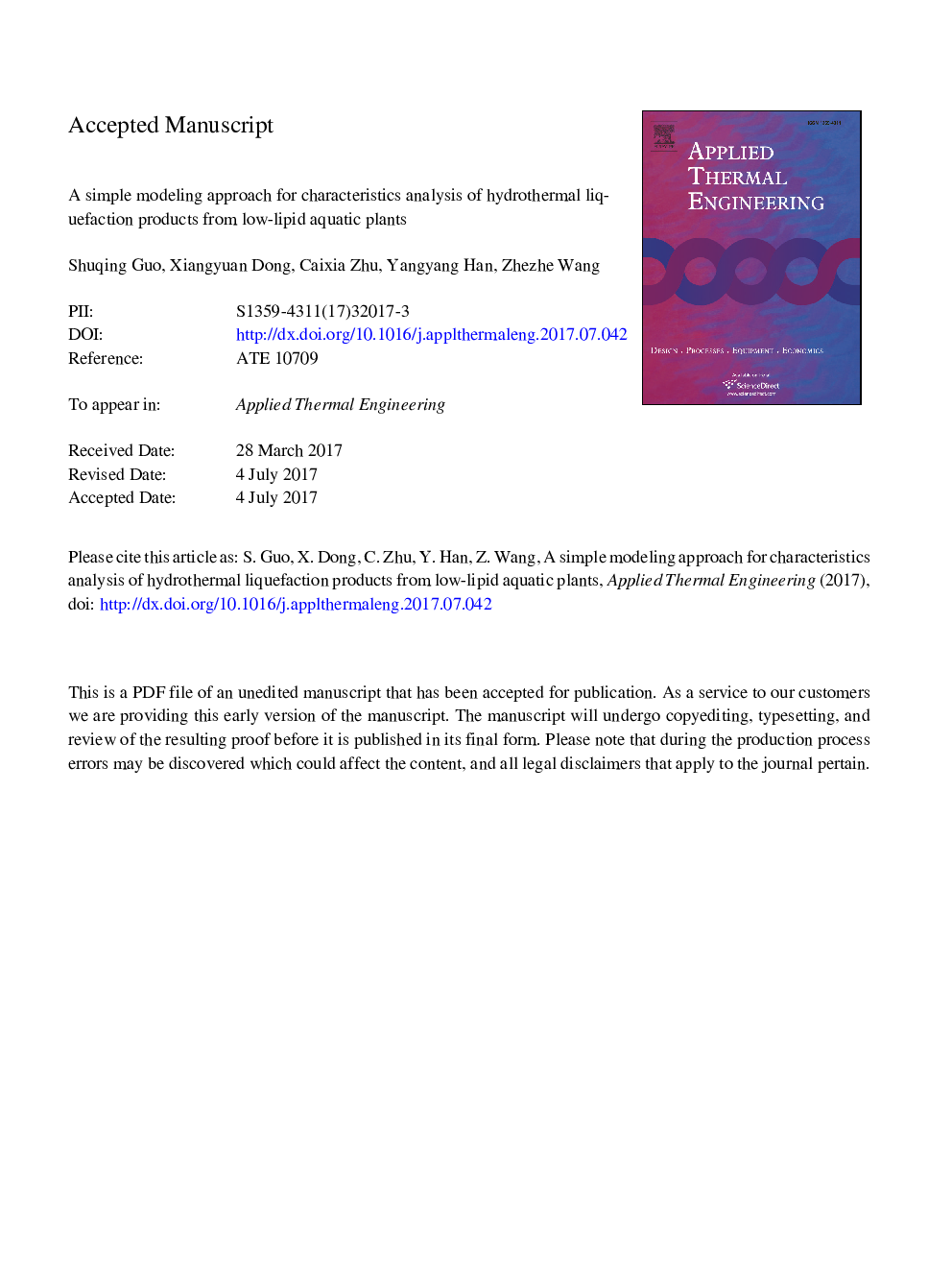| Article ID | Journal | Published Year | Pages | File Type |
|---|---|---|---|---|
| 4991195 | Applied Thermal Engineering | 2017 | 30 Pages |
Abstract
Hydrothermal liquefaction (HTL) product distributions highly depend on reaction temperature and holding time. This paper provided a new method to establish the isothermal model on the relationship between HTL product characteristics and severity factor (combined temperature and time). The results showed that the yields of the HTL bio-oil and aqueous-phase product presented strong correlations with reaction severity and could be modeled by Lorentz (or Gaussian) function, while the HTL solid char decreased gradually with increase of reaction severity, and could be modeled by the Dose-response function. All the mean adj. R2 values of the models were greater than 0.89. The H/C, O/C ratio, dry ash-free carbon recovery (energy recovery) could be described by Bi-Dose-response, Dose-response, Dose-response, and Lonrentz models, respectively. Low biomass/water ratio resulted in achieving the maximum bio-oil yield at low reaction severity. High bio-oil yield could be produced with low-ash feedstock. The maximum dry ash-free carbon recovery and energy recovery of Desmodesmus sp. (Dsp), Cyanobacteria sp. (Csp), Bacillariophyta sp. (Bsp), and Duckweed (Dw) dependeded less on the carbohydrate composition. The newly established models of the HTL yields provide a promising method for predicting the product characteristics, simulating, designing, and optimizing the HTL system.
Related Topics
Physical Sciences and Engineering
Chemical Engineering
Fluid Flow and Transfer Processes
Authors
Shuqing Guo, Xiangyuan Dong, Caixia Zhu, Yangyang Han, Zhezhe Wang,
